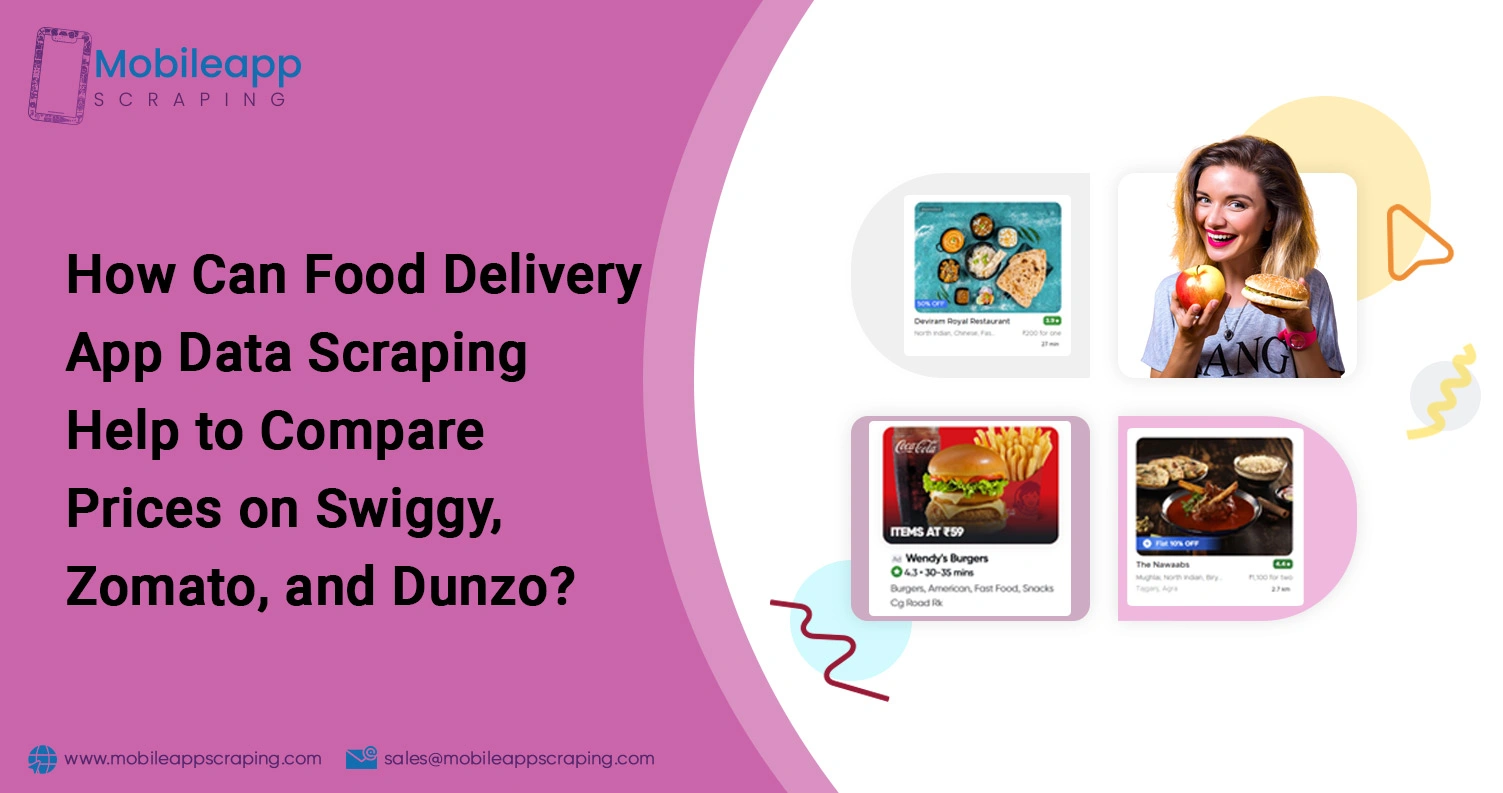
How Can Food Delivery App Data Scraping Help to Compare Prices on Swiggy, Zomato, and Dunzo?
Introduction
India’s online food delivery market is rapidly transforming, thanks to platforms like Swiggy, Zomato, and Dunzo. These apps have revolutionized how millions get their meals, but users often overlook the pricing inconsistencies between them. The same meal may be priced differently on each platform, making price comparison a valuable practice not only for customers but also for restaurants, market analysts, and delivery platforms themselves.
To enable such comparisons, Food Delivery App Data Scraping provides a precise method for extracting and analyzing key pricing and menu data from these platforms. This approach offers a deeper understanding of how and why food pricing varies across different apps.
Why Comparative Food Pricing Demands Attention?
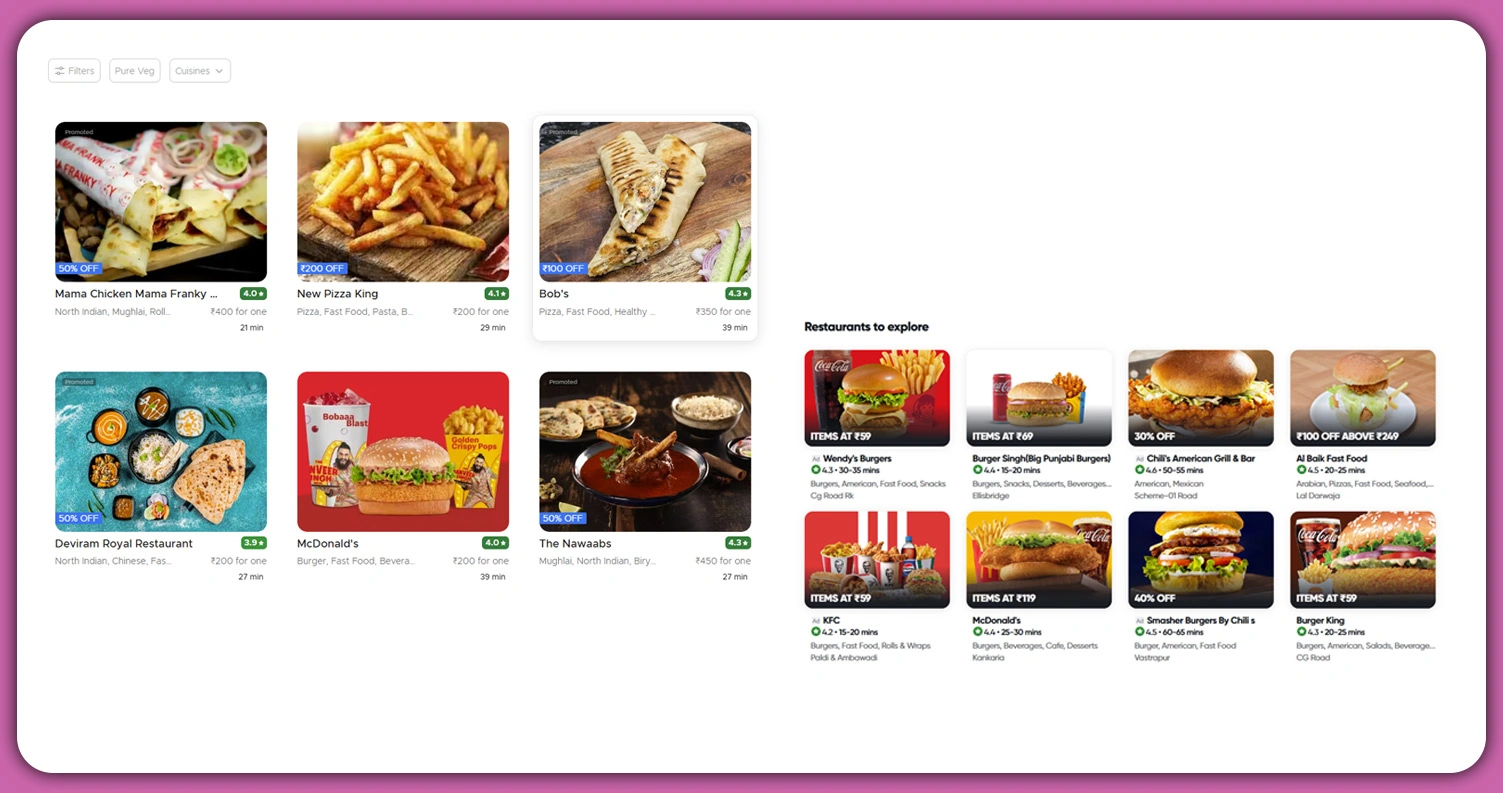
As more people turn to online ordering, pricing structures have become more layered and dynamic. The same food item may cost ₹200 on one platform and ₹250 on another, sometimes even at the same restaurant.
Understanding these discrepancies is essential because:
- Customers seek the best price for their orders.
- Restaurants aim to strike a balance between profitability and platform presence.
- Businesses need reliable data to create more innovative strategies.
- Delivery platforms monitor each other’s pricing to stay competitive.
Given this competitive landscape, Food Delivery App Data Scraping becomes a key method for uncovering hidden pricing trends and making informed decisions accordingly.
Identifying Price Differences Across Platforms
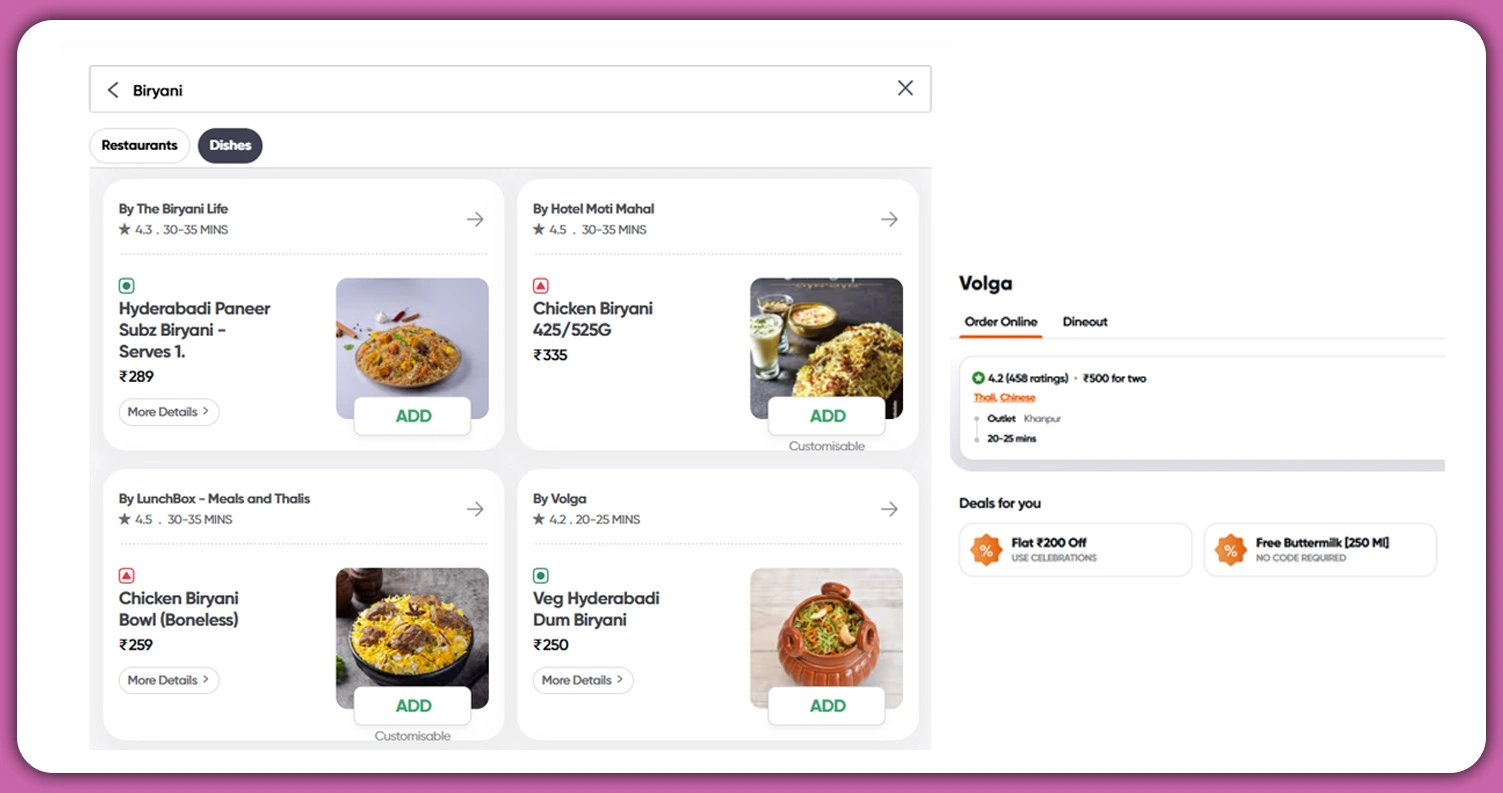
Understanding how food delivery platforms price the same product differently is crucial for businesses seeking to remain competitive. These variations, even if they seem minor, can add up to significant gains or losses when scaled across multiple locations and orders.
Below is a real-world pricing breakdown of a popular dish, biryani, listed on three major delivery apps: Swiggy, Zomato, and Dunzo.
1. Swiggy Price Insights
Swiggy is known for its broad reach and regular discounts. Pricing here often appears lower due to aggressive promotions; however, it's essential to read the fine print.
Final Price: ₹245 (after discount)
- The platform emphasizes discounts over service transparency.
- Pricing may vary depending on the availability of our delivery partners.
- Discounts are dynamic—they change depending on the time of day or location.
- Coupons often create temporary price reductions.
2. Zomato Price Overview
Zomato tends to include a service charge upfront, which can make prices seem higher despite offering loyalty benefits like Zomato Gold.
Final Price: ₹265 (includes service charge)
- Service fees are displayed and included in the total cost.
- Loyalty programs affect pricing structure.
- Restaurant packaging or platform fees may vary.
- Delivery fees fluctuate with demand spikes.
3. Dunzo Price Summary
Dunzo employs a hyperlocal model that often features short-term offers, facilitating quick decision-making. Its pricing is competitive but less consistent.
Final Price: ₹250 (with limited-time deal)
- Time-sensitive promotions influence the base price.
- Delivery radius affects price stability.
- Partnered outlets may display different rates.
- Users may see price adjustments based on app version or city.
When businesses conduct a Dunzo vs Swiggy Food Pricing audit, these platform-based discrepancies can be crucial. A ₹15–₹20 difference might seem negligible per order, but across thousands of daily transactions, this directly impacts margins, customer loyalty, and pricing strategy.
Such price inconsistencies are not just data points—they represent real opportunities for smarter pricing, targeted promotions, and improved vendor negotiations. Brands that track and act on these insights consistently unlock a measurable competitive advantage.
Factors That Impact Food Delivery Pricing
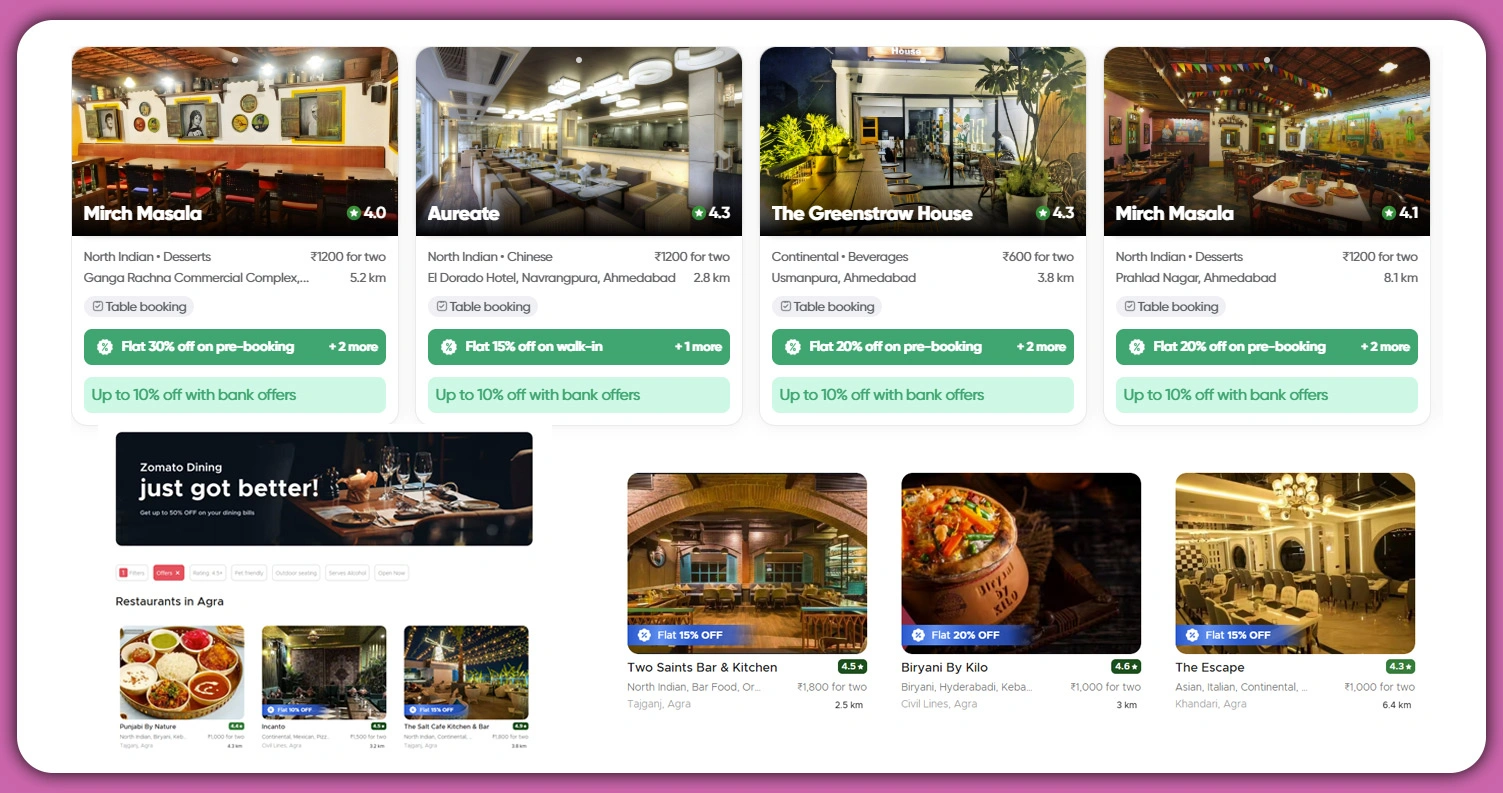
Pricing on food delivery apps isn’t just based on the menu—it reflects a combination of changing variables.
When conducting a Swiggy vs Zomato Price Comparison 2025, these factors come into play:
- Regional price adjustments and distance-based fees.
- Time-limited offers, cashback deals, and exclusive discounts.
- Delivery partners or service charges pass costs down to customers.
- Peak-hour surge pricing that varies by platform.
- Commissions are charged to restaurants on each sale.
These variables make pricing highly contextual. Understanding them requires not just examining the final amount, but also utilizing structured data from all layers involved.
Smarter Data Collection Using API-Based Scraping
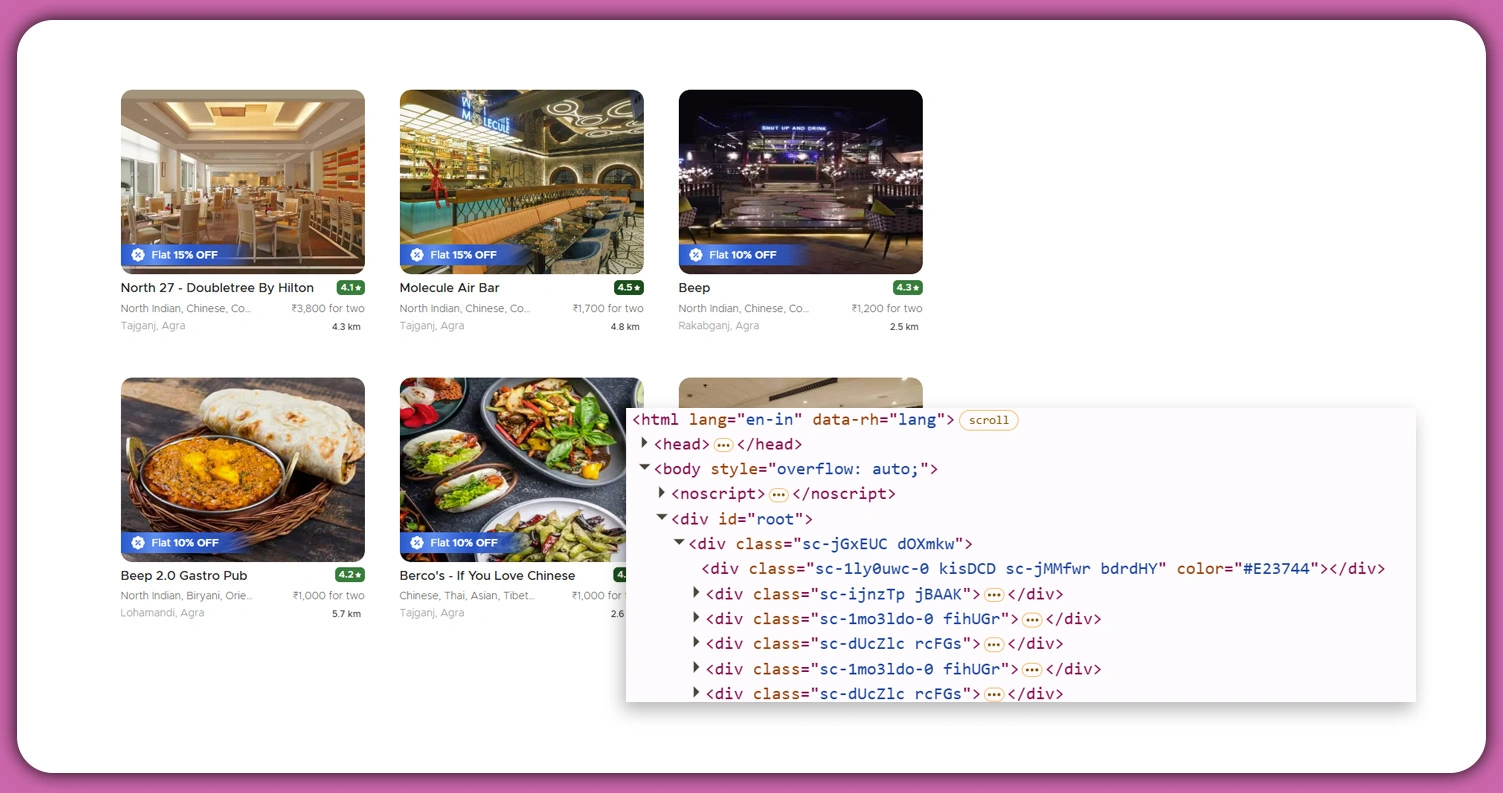
Manually comparing prices across platforms is both time-consuming and prone to error. Instead, using Swiggy, Zomato, and Dunzo API Scraping allows for automatic, accurate, and scalable data extraction.
With these automated scraping tools, you can collect:
- Menu items and brief descriptions.
- Regular and discounted prices.
- Restaurant locations and delivery fees.
- Estimated time of delivery.
- Active coupons or platform-specific offers.
This structured data allows users and analysts to Compare Food Prices Across Delivery Apps easily and reliably, turning chaotic pricing into digestible insights.
The Power of Real-Time Price Monitoring
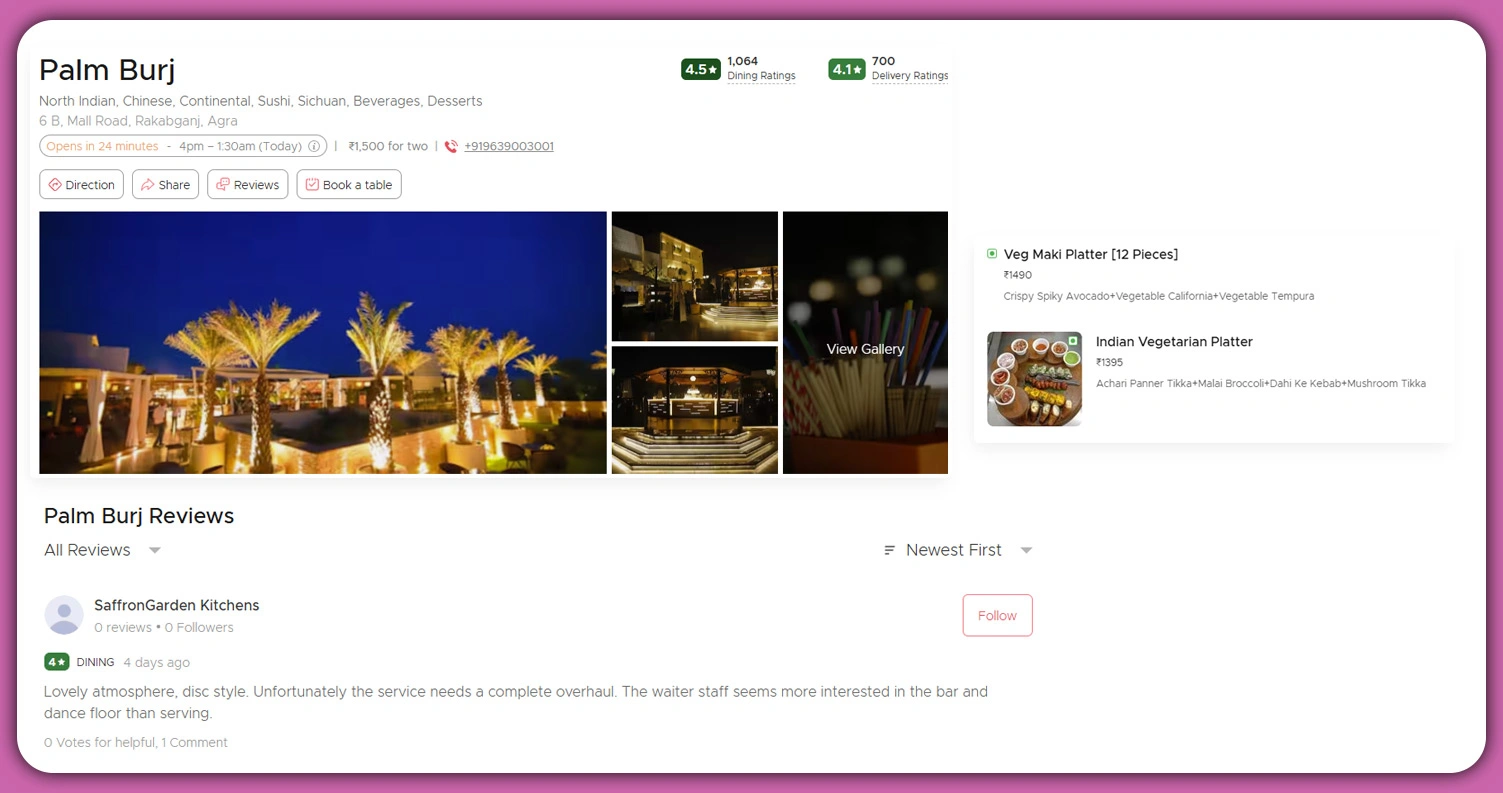
Prices on food delivery platforms are fluid. They shift based on time, demand, and promotional campaigns. Through Real-Time Food Price Monitoring India, businesses can detect and react to:
- Sudden price hikes during festivals or weekends.
- Flash sales or platform-wide discount events.
- Competitor strategy changes.
- The delivery fee may change due to logistical issues.
Historical trends derived from Zomato Menu Data Extraction help forecast future prices, enabling both restaurants and consumers to make more informed decisions.
How Restaurants and Partners Benefit from Price Analysis?
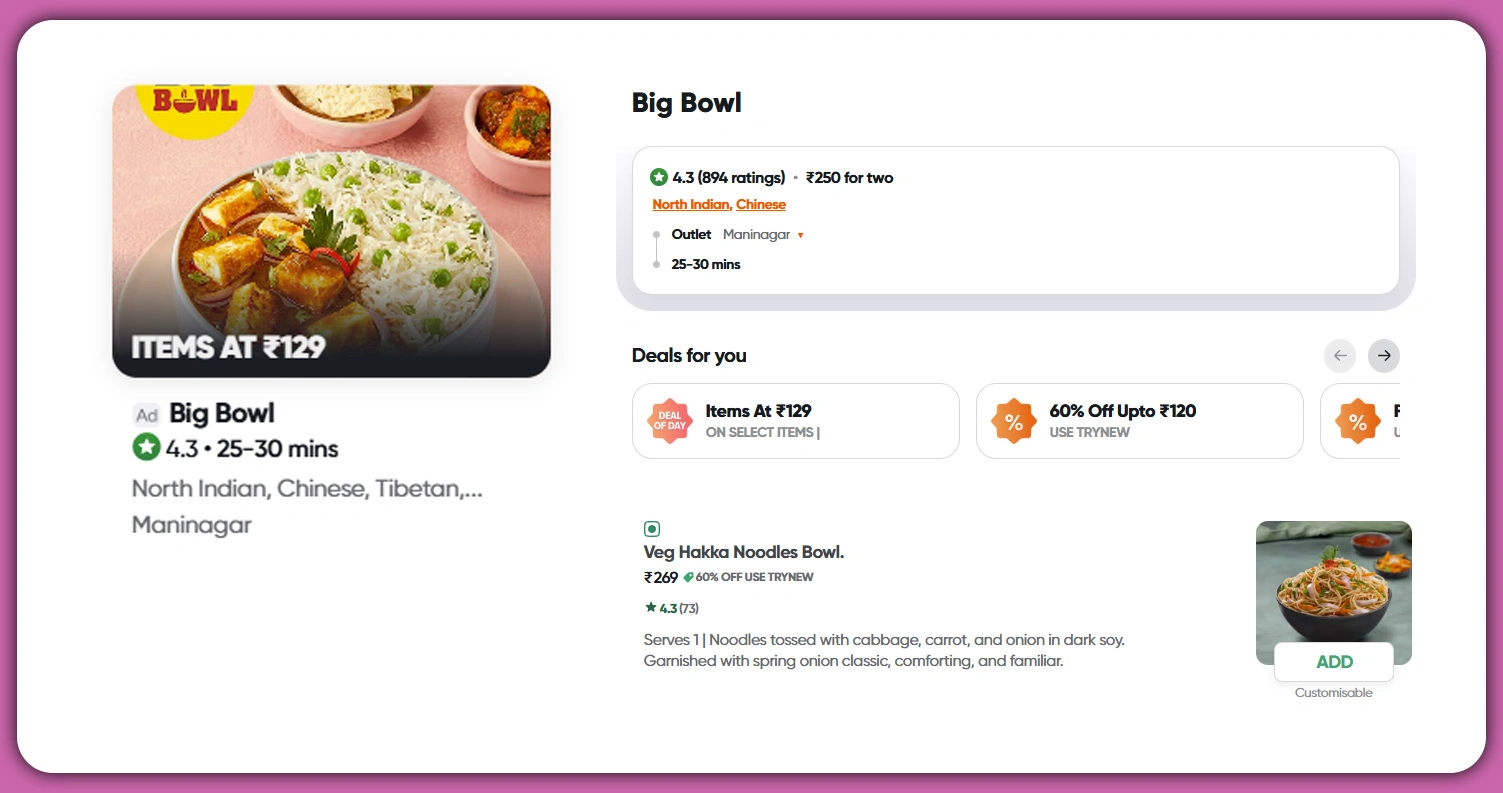
Restaurants must stay competitive while ensuring their margins aren’t hurt. With tools like Swiggy Price Trends Analytics, restaurants gain insights that help them:
- Decide which platform yields the best response.
- Optimize pricing per location, time, or customer behavior.
- Strategize commission handling based on order volume.
- Evaluate how discounts affect customer choice.
This is part of a broader Restaurant Price Analysis 2025 strategy that enables restaurants better to align pricing with consumer expectations across various regions.
Automating Price Intelligence Through Web Scraping
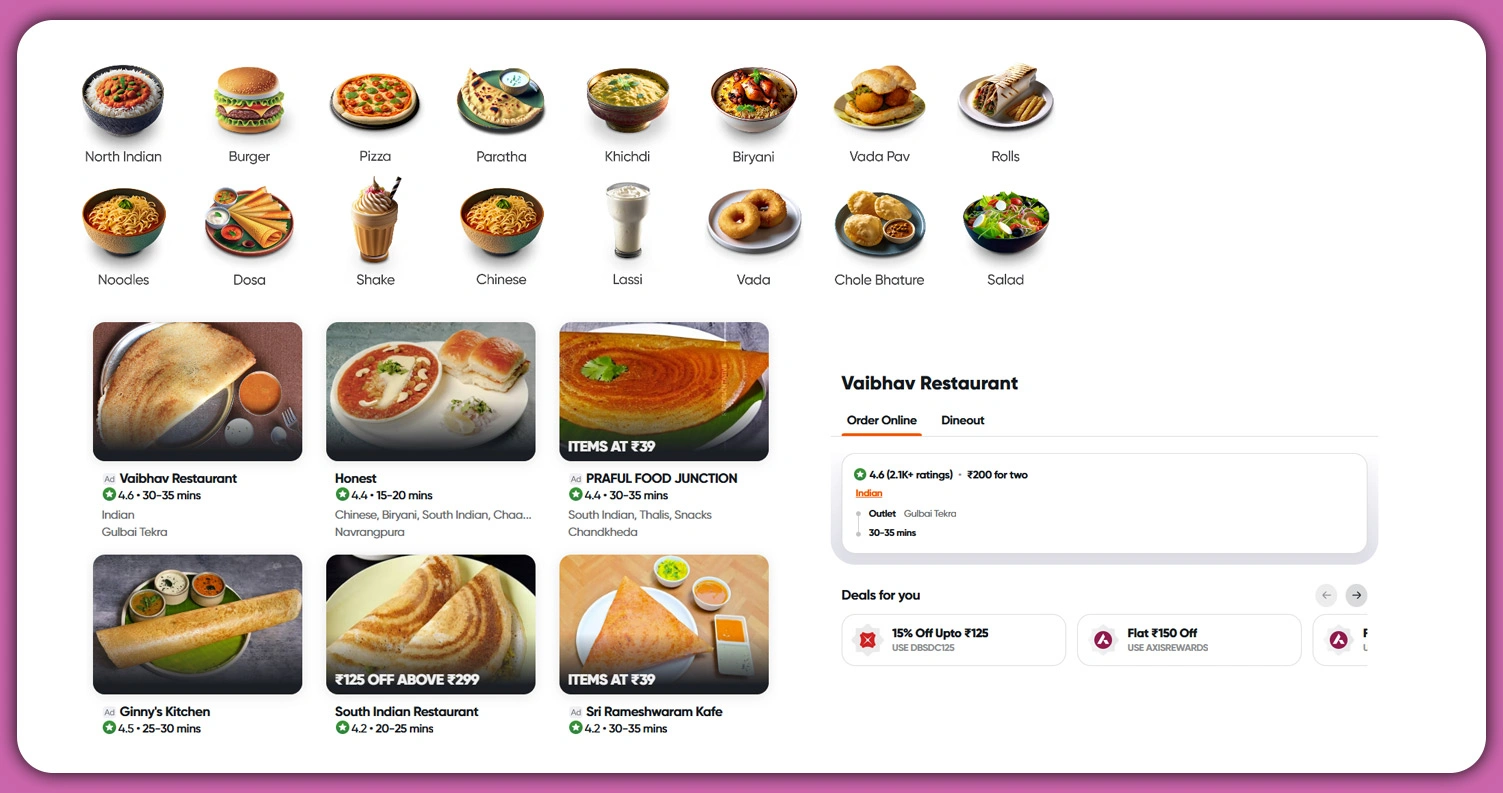
For businesses handling large-scale delivery analytics, manual research isn’t viable. That's why Web Scraping For Food Delivery Pricing is a game-changer.
These tools make it easier to:
- Extract thousands of data points in minutes.
- Format results cleanly for dashboarding or analysis.
- Eliminate human error and save time.
- Get immediate updates as pricing changes.
So, whether you want to Extract Menu Prices From Swiggy or any other app, automation offers speed, scale, and consistency.
Creating Data Assets for Market Intelligence
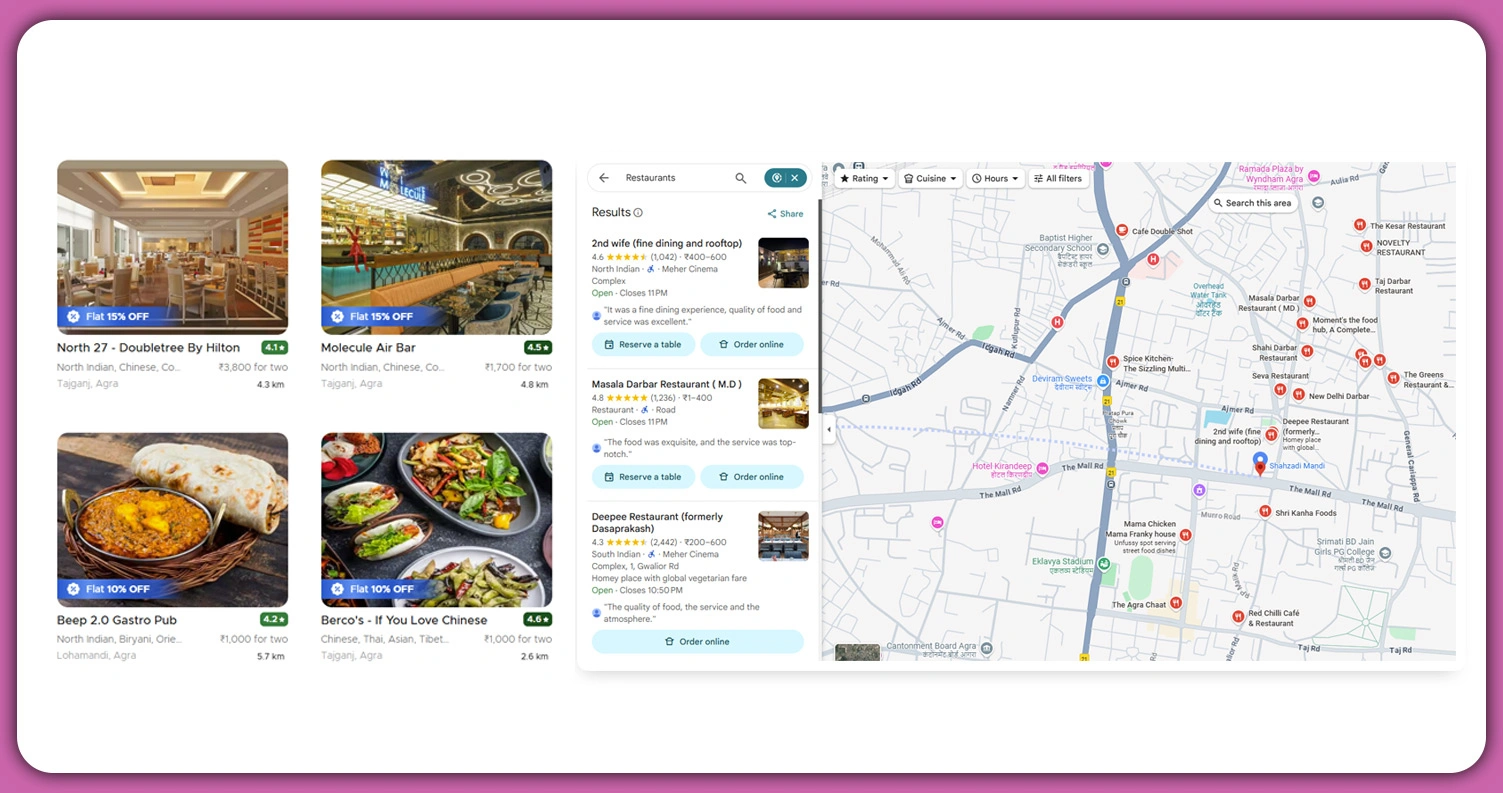
Having access to a historical dataset, such as the Zomato Food Cost Dataset, opens the door to powerful insights.
With enough records over time, you can:
- Study pricing behavior over days or weeks.
- Recognize pricing strategies by location or category.
- Determine when discounts drive sales.
- Understand how customers respond to different price bands.
Such datasets are essential for long-term planning and benchmarking strategies across cities, regions, or customer segments.
Tracking Menu Changes for Competitive Strategy
Menus evolve—items are added, prices change, and old dishes are removed. With Scraping Swiggy And Zomato Menus, you can regularly track:
- Introduction of new items or combos.
- Seasonal adjustments to pricing.
- Shifts in popularity or item availability.
- Menu personalization for locations.
This data empowers brands and marketers to adjust their offerings and remain relevant in an ever-changing food delivery ecosystem.
Analyzing Food Price Volatility and Patterns
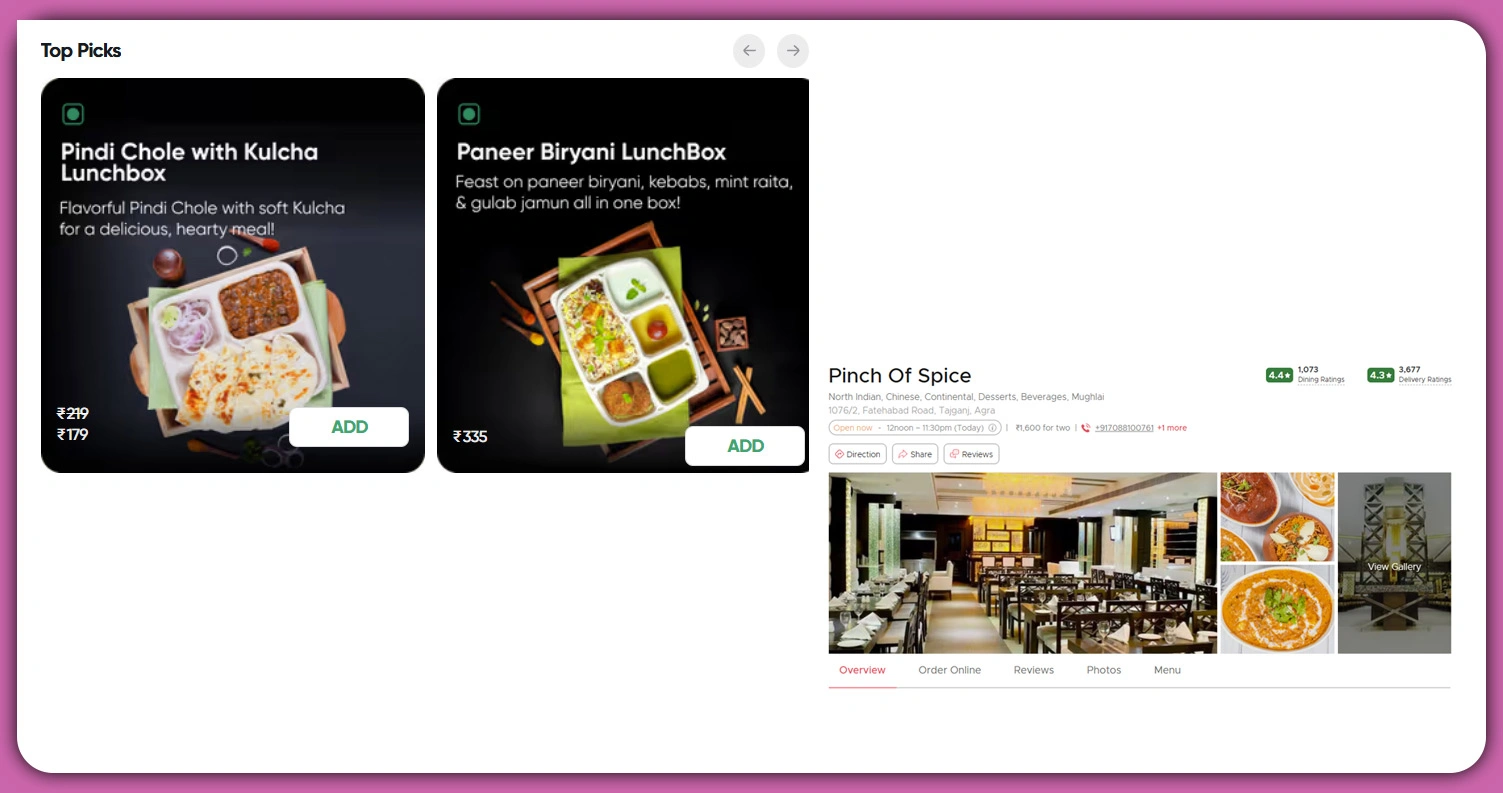
Food delivery prices don’t change randomly. Using Food App Price Fluctuation Insights, businesses can identify key pricing triggers such as:
- Weekday vs weekend pricing shifts.
- Seasonal or festival-based price surges.
- Results of limited-time platform offers.
- User behavior during app-wide campaigns.
This form of intelligence supports both predictive analytics and real-time decision-making for platforms, restaurants, and market research teams.
How Mobile App Scraping Can Help You?
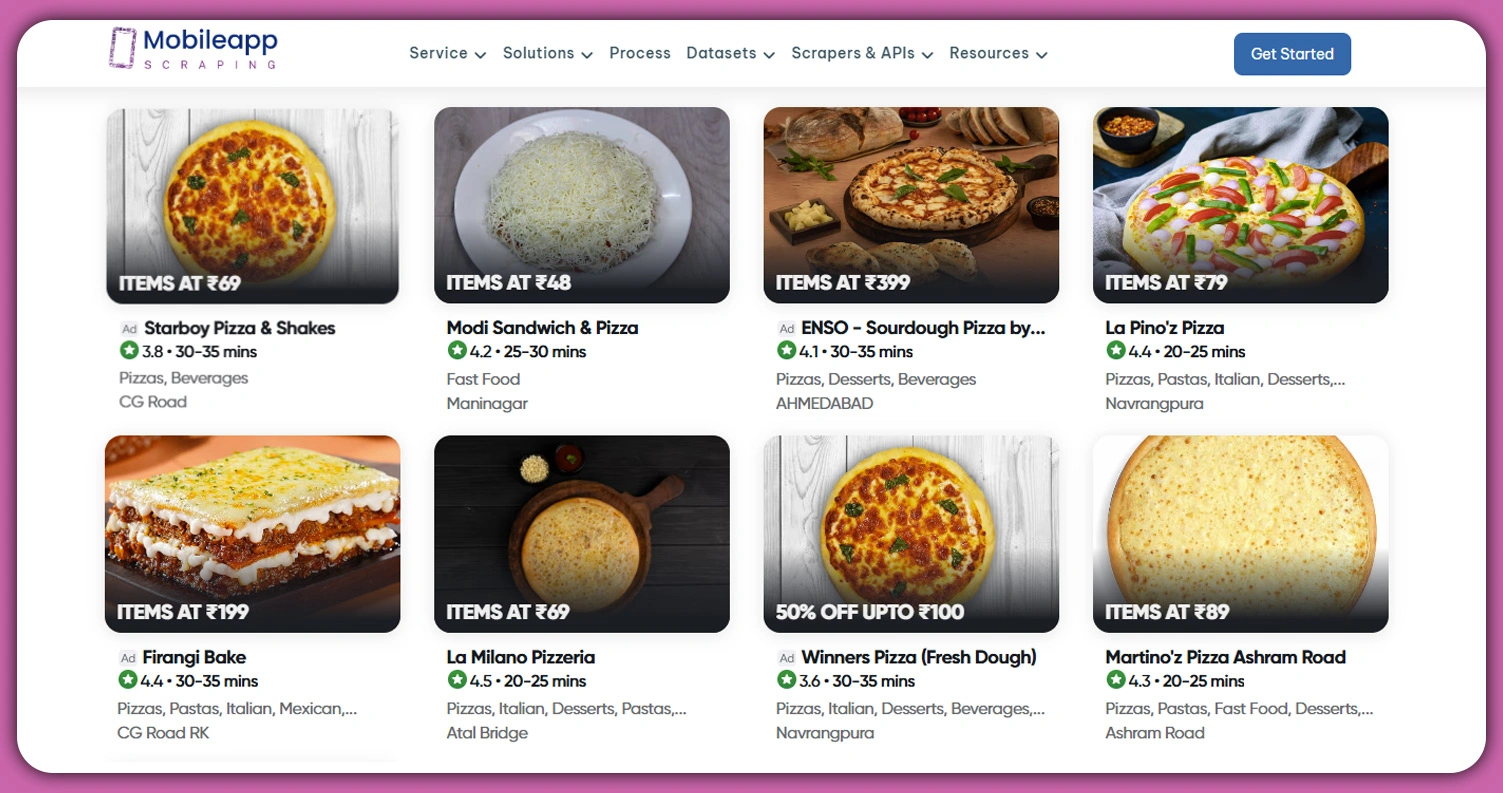
We simplify Food Delivery App Data Scraping by offering precise, scalable, and real-time solutions tailored for businesses operating in India’s food delivery space. Our approach ensures you receive structured insights to compare prices, monitor trends, and adjust strategies quickly across Swiggy, Zomato, and Dunzo.
Here’s what we can do for you:
- Deliver accurate price data across major food delivery apps.
- Extract complete menus with item-level details.
- Monitor real-time food price changes across cities.
- Provide historic trends and price movement analytics.
- Set up automated workflows for recurring data needs.
- Enable city-wise pricing and regional insights.
Whether you're a restaurant, pricing analyst, or aggregator, our system brings the clarity and flexibility required to stay competitive. We also support large-scale Food App Pricing Comparison India projects with fully customizable data pipelines.
Conclusion
Accurate pricing data is no longer optional—it’s essential for brands seeking to stay competitive in India’s fast-paced food delivery market. With Food Delivery App Data Scraping, you gain structured visibility into pricing shifts, menu changes, and delivery fees that directly impact consumer behavior and profitability.
With rising demand for transparency, businesses are increasingly investing in Restaurant Price Analysis 2025 to stay aligned with evolving customer expectations. Contact Mobile App Scraping today to schedule a demo or get started with a custom data solution built for your goals.